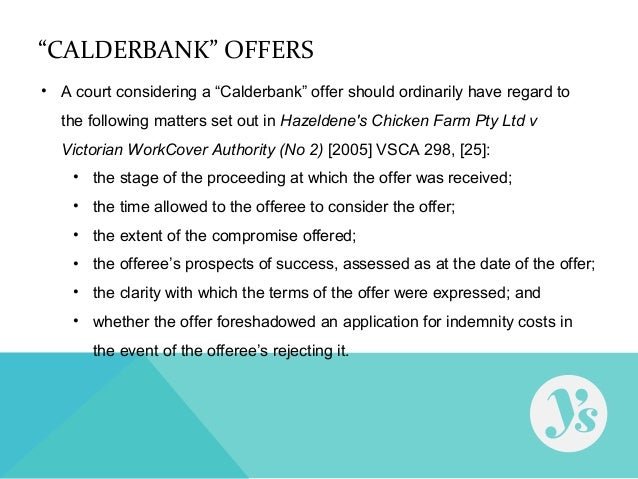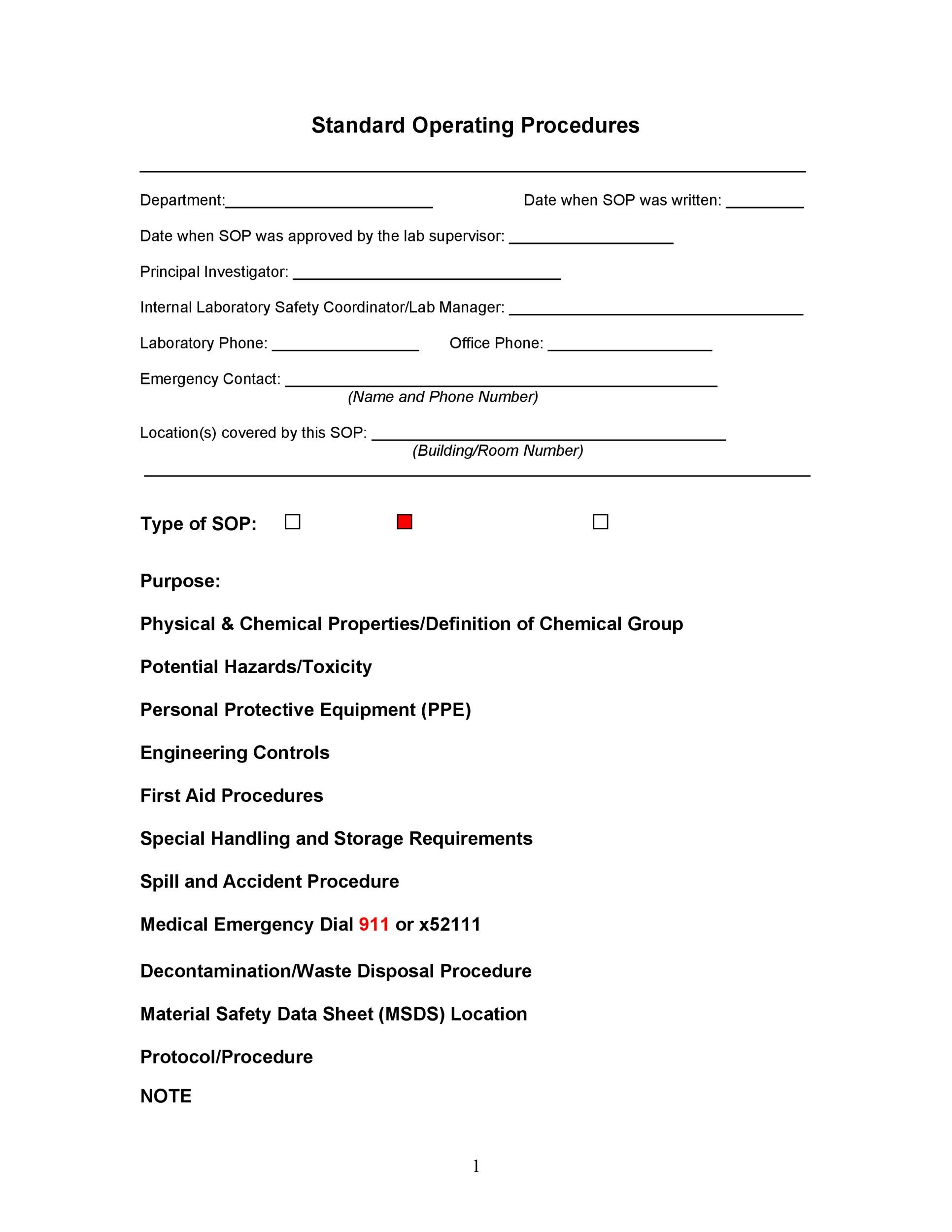AITKEN WHYTE LAWYERS BRISBANE – LITIGATION AND DISPUTE RESOLUTION LAWYERS AND SOLICITORS FOR BRISBANE, QUEENSLAND
Calderbank Offer Letter Template Calderbank Letters 3 Calderbank letters developed from the case of Calderbank v Calderbank, 4 Download kamen rider ryuki full episode sub indo. Which determined that confidential settlement offers ('without prejudice') can be shown to the court for the purposes of determining a costs order. What is a calderbank offer? We hope this post write legal letter template without prejudice inspired you and help you what you are looking for. Corporate legal assistant cover letter sample. It is also necessary so that the business runs smoothly without illegal activities. Never disregard professional legal advice or delay in seeking legal. For this to be the case, the terms of the offer outlined in the Calderbank letter must be reasonable and comparable to the sum awarded by the court. Considering the Calderbank Offer. You should fairly consider all Calderbank offers you receive. When considering the offer, there are three important considerations to keep in mind. A Calderbank offer, otherwise known as a ‘Without Prejudice Save as to Costs’ offer, is a tactic that can be used to settle a dispute for a lower amount and avoid going to a court trial. This tactic is named after a case from 1975 in the English Court of Appeal, between Mr and Mrs Calderbank. A Calderbank offer is a letter written by one party, generally the Defendant, to the Plaintiff, making an offer to resolve the litigation. It should be marked “ without prejudice save as to costs ”, or else it may be shown to the Court at the outset, which could influence the Court’s views on both liability and quantum.
Calderbank Offers
Costs Protection in Litigation
There is no doubt that litigation is expensive. Each party to a dispute can spend many thousands of dollars in an attempt to advance or defend their case. The costs consequences for the losing party can be significant. Costs orders by a court usually follow the event, meaning that that the successful party to litigation will receive a costs order in their favour so that the losing party has to pay the successful party’s legal costs (and their own). What a court orders generally as costs are called “ordinary” costs or “party and party” costs. In some rare instances a court may also order “indemnity” or “solicitor and client” costs. The differences between these are quite dramatic and a successful party who receives the benefit of a costs order may only expect to recover ½ to 2/3rds of what they actually pay their lawyer.
For this reason, there are steps that can be taken in an attempt to protect all the reasonable costs a person may pay their lawyers to receive an ‘indemnity’ costs orders through making offers to settle. They can either be formal offers to settle under the Uniform Civil Procedure Rules or what are known as “Calderbank” offers. This explores in a little detail what these are and the differences between them.
Uniform Civil Procedure Rules
The rules of the court have been designed to encourage parties to make and accept reasonable offers to settle out of court. Accordingly, a party who fails to make or accept a reasonable out of court settlement can incur considerable legal cost penalties.

Offer made by Plaintiff:
If a Plaintiff makes an offer that is not accepted by the Defendant but then ultimately obtains a judgment better than the offer, then the Defendant will be required to pay the judgment of the court plus the Plaintiff’s legal costs, which will include all costs reasonably incurred and of a reasonable amount (known as ‘indemnity’ costs).
An example is if a Plaintiff notifies the Defendant that they are willing to accept an out of court settlement of $10,000. The Defendant, however, rejects the offer and the matter proceeds to trial. If the Plaintiff subsequently wins the case and is awarded $11,000, the Defendant will be required to pay not only the judgment but all the Plaintiff’s reasonable legal costs as well from the date that the Plaintiff made the Offer to Settle. This is because the Defendant is effectively being punished for not accepting the Plaintiff’s reasonable Offer to Settle out of court.
Offer made by Defendant:
Ordinarily, if at trial a Defendant is ordered to pay money to the Plaintiff, the Defendant will also be ordered to pay the legal fees incurred by Plaintiff in taking the matter to trial. The philosophy behind this is that the Plaintiff incurred costs in taking the matter to trial and, if the Defendant had rather paid initially the money that the Plaintiff was at court found to be owed, the Plaintiff would not have incur the legal fees associated with taking the matter to trial. Therefore if the Defendant is found at court to owe money to the Plaintiff, the Defendant will normally be ordered to pay – in addition to the money found to be owing – the Plaintiff’s legal fees.
However, if the Defendant makes an offer that is not accepted by the Plaintiff but then the Plaintiff ultimately obtains a judgement that is not better than the offer, then the Defendant must pay the Plaintiff’s costs up to and including the day of service of the Offer to Settle, but the Plaintiff must then pay the Defendant’s costs from after the day of service of the Offer to Settle.
An example of this is if the Defendant makes an offer of $10,000 to settle the matter but the Plaintiff rejects this offer. The matter proceeds to trial and the Plaintiff wins the case but is awarded $10,000 or less. The Defendant will have to pay the Plaintiff’s costs up to the date that the Defendant made the offer, whereas the Plaintiff will have to pay the Defendant’s reasonable costs from the date the Plaintiff received the Offer to Settle.
The effect of this cost consequence for an offer to settle delivered by a Defendant (“Offered Amount”) is that, if the Plaintiff rejects the offer and (later) at trial the Plaintiff is awarded a sum of money (“Trial Amount”) that is less than the Offered Amount:
- the Defendant will be ordered to pay the Trial Amount, and will also be ordered to pay the legal fees incurred by the Plaintiff until the time of the Offered Amount;
- BUT also
- the Plaintiff will be ordered to pay the legal fee’s of the Defendant incurred from the time of the Offered Amount to the awarding of the Trial Amount. In short, even though the Plaintiff won, it is still ordered to pay the legal fees incurred by the Defendant from the time of the Defendant’s Offered Amount.
Calderbank Offers
A “Calderbank” offer is named after the decision in Calderbank v Calderbank [1975] 2 All ER 333. A Calderbank offer is essentially a written offer made on a without prejudice basis. It is made expressly reserving the right to bring the offer to the notice of the Court on the question of costs if the result for the party served with the offer is not more favourable than what has been offered.
A Calderbank offer is an “all-in” offer made inclusive of any claim for legal costs. It is a precise amount that is offered in full and final settlement of the claim. There is no need to guess what amount of legal costs will be assessed over and above the amount of a formal offer of compromise. If a more favourable result is achieved, the offer can be tendered to the court in support of a request for indemnity costs from the time the offer was made.
The court will consider a number of factors such as whether the offer was reasonable and a genuine attempt to settle the litigation, if the offer was clear in its terms, and if it was left open for a reasonable period of time for acceptance, such as, a period of say 14 to 28 days.
Summary
The use of either Calderbank offers or offers under the UCPR are useful tools that should be considered in all litigation in an attempt to bring the litigation to an end, due to the ‘stick’ that can be used by the court in an award of an indemnity costs order if not accepted.
Office Location and Contact Details

Brisbane
Aitken Whyte Lawyers Brisbane
2/414 Upper Roma Street
Brisbane QLD 4000
Calderbank Letter Template Australia
Fax: +617 3211 9311

E: enquiries@awbrisbanelawyers.com.au
A Calderbank offer, otherwise known as a ‘Without Prejudice Save as to Costs’ offer, is a tactic that can be used to settle a dispute for a lower amount and avoid going to a court trial. This tactic is named after a case from 1975 in the English Court of Appeal, between Mr and Mrs Calderbank.
Calderbank Letter Template Free
A Calderbank offer is an offer made by one party to the other side of a dispute. It puts the other side on notice that if the dispute goes before a court, and the outcome is less favourable to the other side than the Calderbank offer being made to them, the party making the offer is entitled to more of their costs of the trial process being recovered, as the court may take into account the offer when they decide on the costs awarded.
It was decided in the 1975 Calderbank v Calderbank case that the offer, made by Mrs Calderbank before the dispute proceeded to the courts, showed she had a willingness to settle the dispute. If Mr Calderbank had accepted the offer that was made to him before trial, then he would have actually been in a better position as the judgment was less favourable to him than Mrs Calderbank’s offer, and neither party would have had to go through the court process. It was also held by the court that Mrs Calderbank was entitled to her costs as from the date that she made her willingness to settle known.
Either side of a dispute can make a Calderbank offer. If the defender of a dispute offers to settle out of court but for a lower amount than is being pursued, and the plaintiff rejects the offer, this Calderbank offer may be taken into account by the Judge when costs are being awarded. The plaintiff may be successful in their claim against the defendant in court, but for a lower amount than what the defendant offered them to settle out of court in their Calderbank offer. In this situation, the Judge can reduce the costs that are payable by the defendant to the plaintiff, leaving the plaintiff with an even lower amount in the end than first sought.

In the same dispute, it may be the plaintiff that makes a Calderbank offer to the defendant to accept to settle out of court for a lesser amount than they were originally claiming. If the defendant thinks they may get a better outcome at trial and refuses this offer, and the plaintiff is awarded a greater amount at trial than their Calderbank offer, the plaintiff may be able to seek increased costs from the defendant.
It is important to weigh up carefully whether to make or to reject a Calderbank offer. It is important to work out if you would want to make such an offer, and when you would make it, as costs are awarded from the date a Calderbank offer is refused. It is equally important to consider at what point you would want to refuse an offer, and similarly when you would be prepared to accept it and settle the matter without proceeding to court.